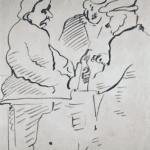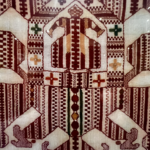One of Europe’s great cities, St. Petersburg was founded by Tsar Peter I in the delta of the Neva River in 1703. Peter had recently conquered these swampy and desolate lands from the twenty-year-old king of Sweden Charles XII, thus gaining access to the Baltic Sea for Russia. The new city was intended to implement the tsar’s dream of a westernized and enlightened Russia. From his northern capital, the great tsar oversaw the transformation of the Muscovite state into a major European power. Initially a military fort, the city was to become Russia’s gateway to Europe.
In 1712, Peter I moved the country’s capital from the land-locked and conservative Moscow to his beloved St. Petersburg inaugurating extensive stone construction on the shores of the Neva. Unlike most of the world’s great cities, St. Petersburg did not evolve gradually but was built from scratch according to a preconceived vision of its founder. Peter invited well-known European architects to plan and build his new city. One of them was J.B. Le Blond, pupil of the famous André Le Nôtre, the creator of Versailles gardens under Louis XIV. Another of Le Nôtre’s famous followers, Pierre L’Enfant, was the creator of the plan for the city of Washington, D.C. The two cities were built on a similar scheme of broad, radiating avenues connecting significant focal points, vast open spaces, and a grid pattern of streets.
A majestic memorial to the energy and genius of its founder, for over two hundred years St. Petersburg was the center of the Russian Empire. Its magnificent palaces, wide city squares, graceful bridges and granite embankments became the backdrop for Russia’s major political and cultural developments. Located on the latitude of the southern tip of Greenland, the northernmost European capital city grew up to be an architectural gem. Often called the “Venice of the North,” the city stands on forty-two islands; is spanned by four hundred bridges, and sixty-eight rivers and canals crisscross the metropolis. St. Petersburg’s peculiar mystique has been glorified in prose and verse by many outstanding Russian authors.







You must be logged in to post a comment.